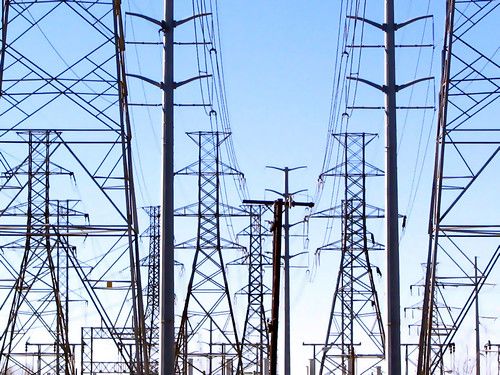While Northwestern students worked tirelessly through their third week of fall quarter, students at the University of California-Berkeley enjoyed cancelled classes Thursday and Friday of last week. Why? They had no power.

Last week, Pacific Gas and Electric (PG&E) intentionally shut off power in 34 Bay Area counties because of an expected severe wind event and a fire weather watch. The power outage ultimately impacted around 738,000 households, which amounted to nearly 2 million Californians.
Why’d they shut the power off?
The shutdown came in anticipation of a strong wind event that was expected to hit the northern, central, coastal and Bay Area counties. This weather event led the National Weather Service to issue a “Fire Weather Watch.” The utility decided to shut off the power in order to prevent their own power lines from starting fires.
Last year, California had the nation’s worst fire season, and PG&E’s power lines took part in starting some of those massive fires. In hopes of preventing more fires, the utility shut off its services. It initially expected to restore power within 12 hours, but restoration was prolonged to at least 48 hours after the initial shut off.
PG&E: We're going to cut everyone's power off.
— Carolyn Copeland (@Carolyn_Copes) October 9, 2019
Us: Who will be affected?
PG&E: A lot of people.
Us: For how long?
PG&E: Maybe 1 day. Maybe 5.
Us: Will MY power be cut?
PG&E: Maybe. Maybe not.
Us: What time?
PG&E: Maybe 4 a.m. Maybe noon. Maybe not at all.
#poweroutage
Did anything actually happen?
The shutoff was successful in avoiding any fire caused by the company’s power lines. Wind gusts of over 70 mph were recorded from Wednesday into Thursday. PG&E later found “50 cases of damage to electrical equipment in the blackout area.” San Francisco, however, was not directly affected by the outages. The company recognized that the execution wasn’t optimal, as illustrated by the frequent website crashes.
How were Californians affected?
Almost 2 million Californians felt the impact of the power outages. Some households were able to avoid major inconveniences by purchasing portable generators and solar panels. According to The Associated Press, portable generators can cost upward of a thousand dollars, while permanent standby generators and the installation of such equipment costs even more.
For families living paycheck to paycheck, this wasn’t an option. Instead, the power shutoff meant they didn’t have access to many daily utilities, such as refrigerators to store food and medications, air conditioning and electricity to charge devices. To make matters worse, some businesses employing hourly wage earners were closed due to the power outages.
Are people upset?
Silicon Valley: We love dark mode on our apps, put it everywhere!
— Oracle Park Gull (@OracleSeagull) October 9, 2019
PG&E: DARK MODE YOU SAY....
Northern California: Wait, this is not what we meant. #poweroutage #pgeoutage pic.twitter.com/WTvqPBNTXd
Curbed San Francisco says the general public was upset by the power outages, as are several government officials. San Francisco Supervisor Hillary Ronen said the city should “cut ties” with the energy company. Gov. Gavin Newsom also criticized the utility not only for the outage itself, but for the company’s poor communication with the public. Marybel Batjer, president of the California Public Utilities Commission, made PG&E audit their execution throughout the outage, saying the company did not follow many of the recommendations given to them when they were given the authority to do these power shutoffs, according to ABC News.
The #poweroutage in CA is a failure of infrastructure planning, a failure of public investment.
— urbanly tinged opinions (@futurebird) October 9, 2019
People *should* be angry.
Nothing reasonable about this. We understand the problem AND the solution. The company simply didn't want to spend the cash to fix it in time.
What now?
As of Saturday, power had been restored to all customers impacted by the outage. However, PG&E previously announced that there will be more outages in the future. As the climate gets warmer and conditions for wildfires and severe weather events continue to increase, the utility is likely to shut off power again. In this case, many hope the company will improve the efficiency of its process and its communication with the public.
Thumbnail courtesy of Wikimedia Commons